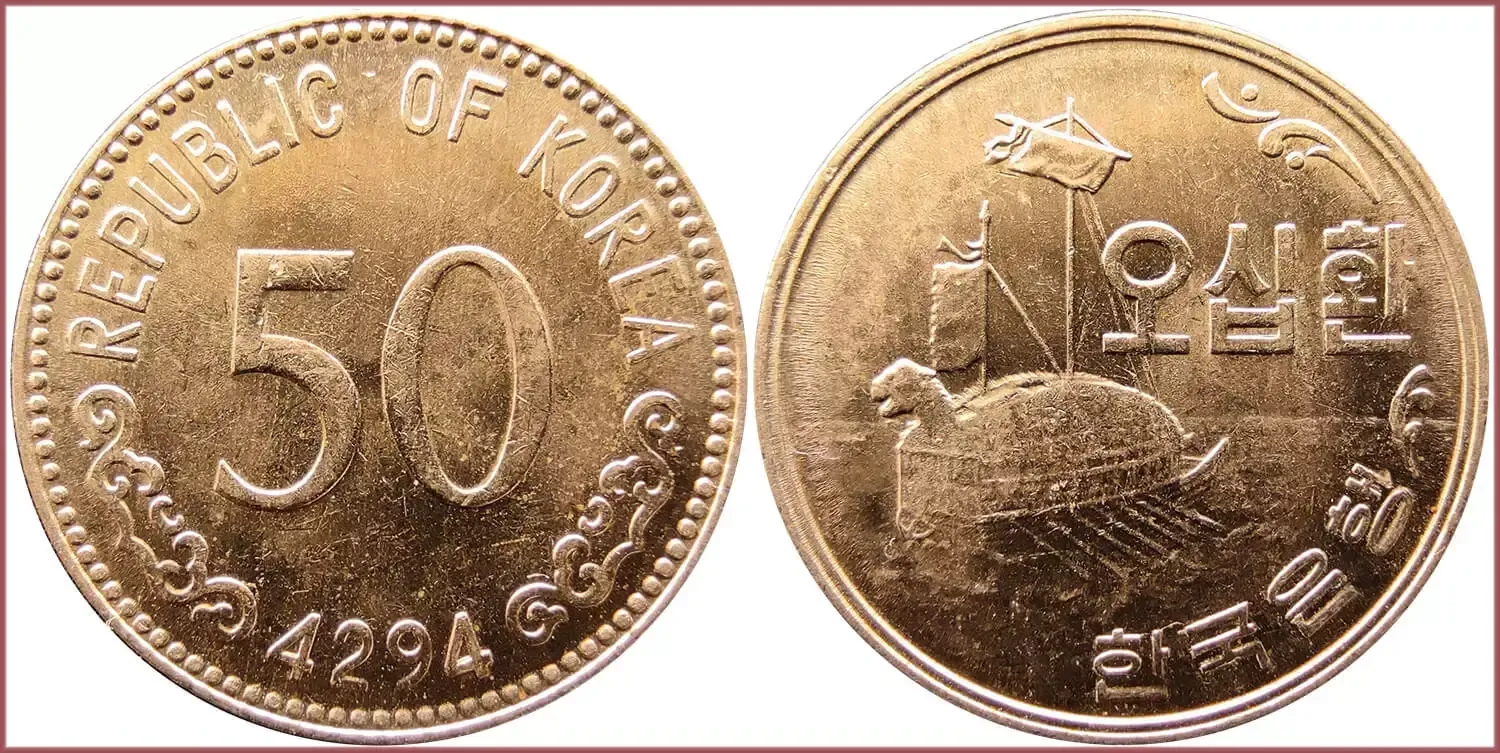HWAN: COIN OF SOUTH KOREA
50 hwan, 1961: Republic of Korea
Date on coin: KE 4294 (KE: Korean Era — date from the founding of the first Korean state entity, Gojoseon or Ancient Korea) = 1961 (Gregorian calendar).
REPUBLIC OF KOREA.
50: the denomination of the coin on obverse is indicated exclusively in digital format.
4294: date according to the Korean Era.
Traditional ornament.
오십환: fifty hwan.
한국은행: Bank of Korea.
Kobukson ("turtle ship") — Korean armored warship of the 15th-18th centuries.
Philadelphia Mint (USA).
Mintage: 20.000.000.
- Nickel brass: 23 mm - 3.7 g
- Reference price: 5.3$
COIN HWAN — WHERE & WHEN (coins catalog: by names & emitents)
- REPUBLIC OF KOREA (SOUTH KOREA, 1959-1961): hwan = 100 jeon (without coins)
HWAN as coin name.
Hwan — historical South Korean coin. It temporarily served as the currency of South Korea during 1953-1962: instead of the won.
Hwan was issued not only as a coin, but also in the form of banknotes (the first time). Paper banknotes of this type were presented in the following denominations: 1, 5, 10, 50, 100, 500 and 1000 hwan, while the coin format was only for 10, 50 and 100 hwan.
The mentioned coins were minted in 1959 and 1961 in multi-million editions in the city of Philadelphia, USA. Their interesting feature, in contrast to the South Korean coins of subsequent issues, is the character of writing the date — according to the local Korean calendar: 4292 and 4294.
After the return in 1962 to the practice of using won as the main monetary unit, the 10 and 50 hwan coins were not withdrawn from circulation. Until 1975, they were used as an alternative to 1 and 5 won, respectively.
The etymology of the name of the hwan coin is not known for sure, but literally translated from Korean, the character "圜" used to denote the currency means "circle, ring, round". — In this respect, the coin names hwan (Korea), yuan (China) and yen (Japan) are closely related.

